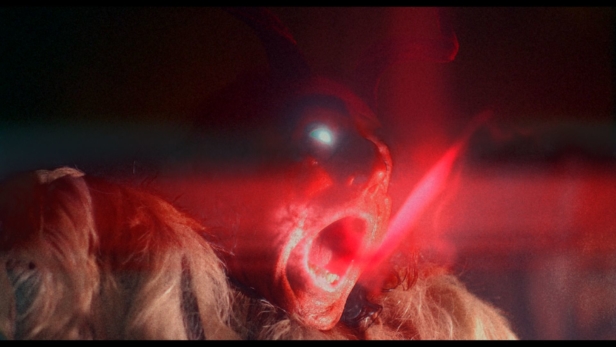The Field Guide To Evil opens with the text of a rhyme (attributed to ‘Anonymous, on Folklore’) about the power of dream-like, fictive tales to tell truths. It is programmatic for this anthology of short films, coordinated by producers Ant Timpson and Tim League (The ABCs Of Death series), each of which takes a different folk tale from around the world as its starting point, and weaves from it an allegory, however distorted or perverse, of the human condition. This is ‘folk horror’ par excellence, hopping the globe in search of the collective origins of our errant unconscious. The result is a trans-national, multi-generic, ambisexual compendium of psychological flotsam and jetsam, latent and unresolved yet all somehow vaguely familiar, like a deep-buried memory.
Each short is introduced by a title card that summarises the relevant piece of folklore, although these prefaces can be there as much to wrong-foot as to inform the viewer. ‘The Sinful Women Of Höllfall’, for example, directed by Veronika Franz and Severin Fiala (Goodnight Mommy), promises a monster, the terrifying ‘Trud’, that visits sinners in medieval Austria, but in this all-female milieu, Kathi (Malene Hauser) not only surrenders to (perceived) sin, but embraces the Trud, drinking long and deep from the teat of forbidden Sapphic desire. Similarly in A Nocturnal Breath, directed by Katrin Gebbe (Nothing Bad Can Happen), a rat-like, Bavarian ‘Drude’ that inhabits a human host to spread its plague is also a figure for the destructive force of incest. Both these stories are set amid the same Dark Age superstition as, say, Robert Eggers’ The Witch or Lukas Feigelfeld’s Hagazussa: A Heathen’s Curse – and both depict women emerging as guilt-free agents of modernity, in control of their own bodies and their own altered destinies.
Also set in the past is Agnieszka (The Lure) Smoczynska’s elliptical ‘The Kindler And The Virgin’, in which wisdom gained through horrific transgression is both chimerical and only ever put to further evil use. Ashim Daddy Ahluwalia’s Lovecraftian Palace of Horrors sees a purveyor of freakish spectacles for the Ringling Brothers’ Circus meeting his match as he tries to cast his eyes upon an unseeable Bengal deity, in a monochrome allegory of colonial hubris, reminiscent of Miguel Gomes’ Tabu. My personal favourite (and the last) of the selection is the Hungarian story ‘Cobblers’ Lot’, directed by Peter Strickland (Katalin Varga, Berberian Sound Studio, The Duke Of Burgundy). It is a tale of fraternal shoemakers vying jealously for the hand – or, more particularly, for the asphodel-slippered feet – of the king’s daughter (Fatma Mohamed), all told through a mix of baroque, exquisitely fetishistic imagery and wry intertitles. It’s essentially Parajov perverted for podophiles.
Three stories bring ancient myths to modern times. In ‘Haunted by Al Karisi, The Childbirth Djinn’, the latest from Turkish filmmaker Can Evrenol (Baskin, Housewife), a vain young mother (Naz Sayiner) is mirrored and surrogated by a shape-shifting demon that her own selfish, larcenous actions have conjured. Yannis (Norway) Veslemes’ ‘What Ever Happened to Panagas the Pagan?’shows the spirit – or spirits – of a legendary, goblin-like Kalikantzaros (Vasilis Kamitsis) crashing a drunken Christmas party on a Greek island in 1984 where the demonic bestiality of excess-loving Panagas (Vangelis Mourikis) is both revealed and forever concealed. In Calvin (The Rambler) Reeder’s ‘The Melon Heads’, a mother and father neglect their young son Arnold (Kannon Hicks) while vacationing in the woods, letting his wilder, more aggressive imagination come out to play.
As with all omnibus films, the bittiness which is the biggest flaw of The Field Guide To Evil is also its chief appeal. For in showcasing so many different talents, ideas and perspectives, it is a film of many parts and no especially coherent whole. Its separate episodes are never long enough to offend or outstay their welcome, while some are great in their own right, and their sheer variety is both entertaining in itself and essential to the film’s multicultural viewpoint. These disparate reports might not be useful guides to the areas of the world from which they originate, but they certainly chart the darker regions of our common psychic landscapes.
The Field Guide To Evil was seen and reviewed at Fantasia 2018.
